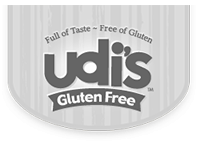Gluten Free
What does following a gluten-free diet mean? That you're embarking on an easy diet with a wide range of health-promoting effects. Instead of dwelling on what you’re giving up, consider that you’re going to enjoy a whole new world of delicious food options to meet your special dietary needs. You’ll be eating seasonally, choosing more fresh fruits and vegetables, focusing on meats, seafood, poultry, legumes, lentils, corn, and rice, and discovering fascinating ancient grains such as quinoa, amaranth, and millet. You’ll be able to eat potatoes, eggs, most cheeses, even chocolate (!)—and enjoy them without guilt because you’ll be taking good care of your body. In fact, you’ll probably end up eating—and feeling—better than ever!
Visit this page for more information about living Gluten Free
---
We carry a large variety of gluten free items, the brands listed below represent just some of the offerings we carry















More Diets
Streptomycin
Pronounced
"strep-toe-MYE-sin"
Uses
This medication is used with other medications to treat active tuberculosis (TB) infection if you cannot take other drugs for TB or if you have a type of TB that cannot be treated with other drugs (drug-resistant TB). Streptomycin belongs to a class of drugs known as aminoglycoside antibiotics. It works by killing the organisms that cause the infection.
This drug may also be used to treat other serious infections (such as Mycobacterium avium complex-MAC, tularemia, endocarditis, plague) along with other medications.
How to Use This Medication
This medication is given by injection into a muscle as directed by your doctor. The dosage is based on your medical condition, weight, streptomycin blood levels, and response to treatment.
When you start treatment for TB, this medication is usually given once a day or as directed by your doctor. Medication to treat tuberculosis is usually used for 9 months or longer. After you receive streptomycin daily for 1 to 2 months, your doctor may direct you to receive this medication less often (such as 2 to 3 times a week). Your doctor may direct you to stop using this medication before stopping your other TB medications. It is very important to keep using streptomycin and your other medications exactly as prescribed by your doctor.
If you are giving this medication to yourself at home, learn all preparation and usage instructions from your health care professional. Before using, check this product for particles or discoloration. If either is present, do not use the liquid. Before injecting each dose, clean the skin you are going to inject into (the injection site) with rubbing alcohol. Change the injection site each time to lessen injury under the skin. Learn how to store and discard medical supplies safely.
Do not stop taking this medication (or other TB medicines/antibiotics) even for a short time unless directed to do so by your doctor. Skipping or changing your dose without approval from your doctor may worsen side effects or make the infection (especially TB) more difficult to treat (resistant). If TB becomes resistant to this medication, it might also become resistant to other TB medications.
For the best effect, use this antibiotic at evenly spaced times. To help you remember, mark your calendar with a reminder.
Tell your doctor right away if your infection symptoms return (such as fever, chills, body aches) while you are using this medication or after you stop using it.
Copyright © 2025 TraceGains, Inc. All rights reserved.
RxAnswers™ is a copyrighted combined product from TraceGains and First DataBank, Inc.
Drug information is selected from data included with permission and copyrighted by First DataBank, Inc. This is a summary and does not contain all possible information about this product. For complete information about this product or your specific health needs, ask your healthcare professional. Always seek the advice of your healthcare professional if you have any questions about this product or your medical condition. This information is not intended as individual medical advice and does not substitute for the knowledge and judgment of your healthcare professional. This information does not contain any assurances that this product is safe, effective or appropriate for you.
This information is intended only for residents of the United States. Products sold under the same brand names in other countries may contain different ingredients.
Learn more about First DataBank
There are some limitations on the information provided in “Nutrient Interactions.” Do NOT rely solely on the information in this article. Please read the disclaimer.
Learn more about TraceGains, the company.
TraceGains and/or its suppliers make no warranties or representations as to the accuracy or completeness of this content herein or that of any organization referred or linked to within this content and will not be liable for any damages arising out of your access to or use of any information found herein or that of any organization referred to within this content.
Information expires December 2025.











